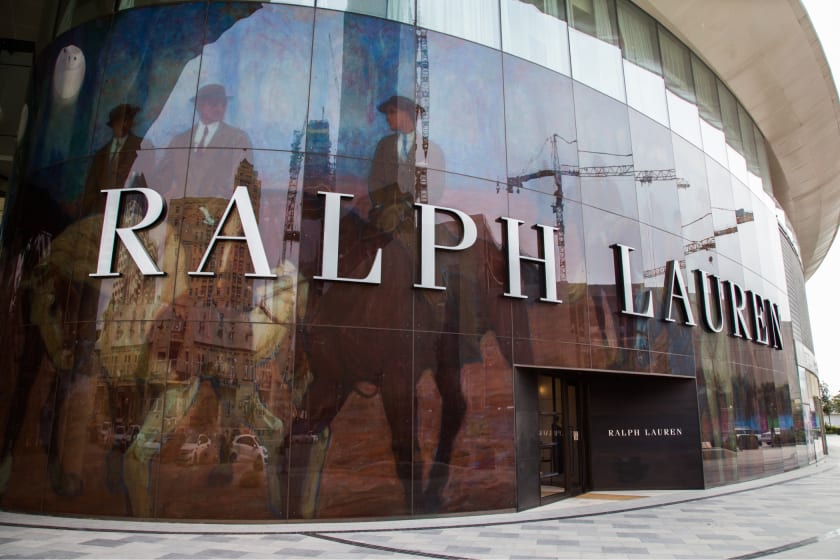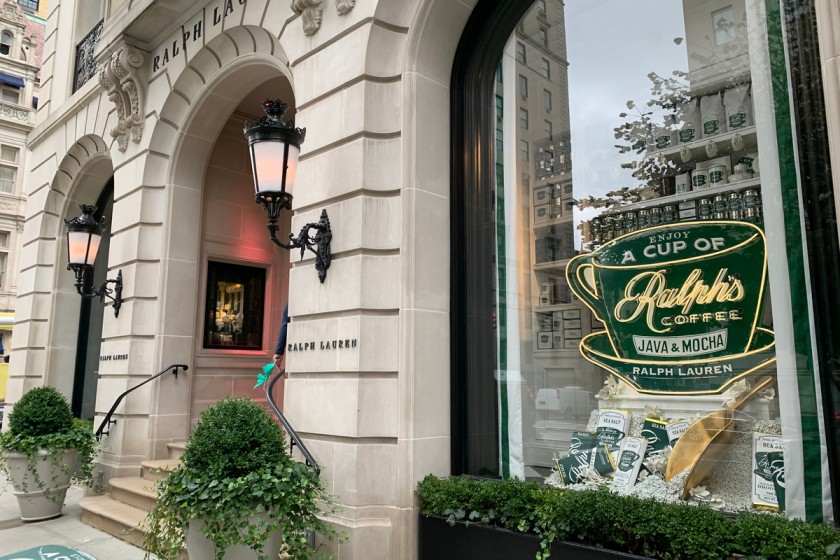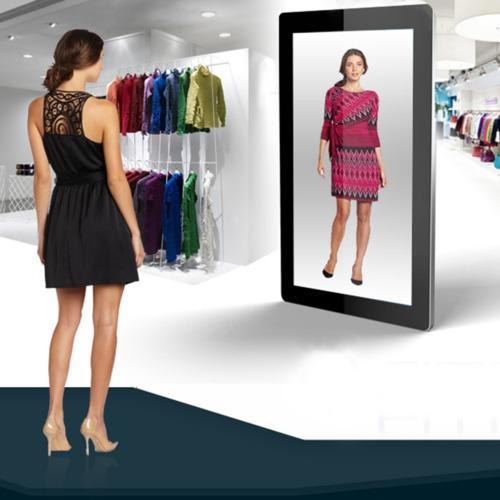Ralph Lauren : How Mobile Connects In-Store And E-Shopping



Ralph Lauren Corporation is a multi-billion dollar giant in the fashion industry. Anyone who has even the slightest idea about fashion knows about Ralph Lauren. They’ve been at the forefront whenever it came to innovation in fashion. When Ralph Lauren launched his first full line of menswear, he named it “Polo”, and the rest is history. Today, Ralph Lauren’s Polo is one of the most desirable lines of menswear.
With technological advancement in all fields, the way business is done is changing fast. The fashion industry too hasn’t been immune to all the tech changes.
From making fashion more sustainable to enhancing customer experience, technology is leaving its mark everywhere. And Ralph Lauren has a reputation of bringing innovation to the table. Their recent decision of bringing e-shopping into the fold is a testament to that fact. Ralph Lauren has launched an e-commerce service that allows customers to buy products with their mobile devices. Now, one can easily buy a T-shirt or any other product by just scanning the QR code next to it. This can be revolutionary in terms of customer experience. In years to come, we can expect that there will be no long lines or any hassle of similar sort.
A Brief History of Tech and Fashion

From using food material to produce fabric to launching platforms that spread awareness about sustainable fashion, technology is being actively incorporated into the business models of most fashion brands. Ralph Lauren’s laudable tech-related move came after his trip to Japan, where he saw the prevalence of bar codes. Lauren incorporated the technology of QR codes into his print material. This was at the time when this technology was very new to North America as well as Europe.
Today, Ralph Lauren has a website where shoppers can browse products. Moreover, they have also launched an app that consumers can use to satisfy their shopping needs. Apart from that, the company has been actively bridging the gap between in-store and mobile experience. These quick response(s) (QR) codes will not only drive their engagement to better heights, but also ensure that more leads are converted.
If one takes a deeper look into this move, it’s easy to say that the company is actively targeting the psychology of its consumer base. Consider this scenario - a potential customer likes a T-shirt. However, by the time that they get into the store to buy it, it is very much possible that they change their mind at the last minute. With QR codes, they will be able to buy that T-shirt in an instant by using their mobile phones. These days, most mobile phones come equipped with in-built scanners. In essence, the rashness and impulsiveness of shoppers are being monetized here. By reducing the time taken while purchasing an item, the probability of the purchase is increased significantly.
Ralph Lauren’s concept of connecting in-store experience with e-shopping experience came into the limelight when their Harrods window display on Brompton Road in London went viral. These aesthetic posters with QR codes gave shoppers access to exclusive and premium products. Thus, it’s safe to assume that Ralph Lauren will be actively pushing QR shopping along with interactive content. Today, brands consider smartphones an extended limb of human beings. Most of us interact with the world through screens, and that’s the bittersweet reality. Just like Ralph Lauren, other brands also have to adjust to this hybrid market of virtual reality and the physical world.
The Bigger Picture

In countries like Japan and India, QR codes are becoming a part of modern culture. Almost every vendor allows consumers to pay via QR codes. America and Europe, on the other hand, have been quite slow at adapting to this technology. However, according to Ralph Lauren’s son David Lauren, it’s time that this technology is brought to the mainstream in the west.
On the outset, there are several apparent benefits of incorporating QR codes into a product-based business model. Firstly, it provides the customer with an additional way to pay for an item. Apart from that, this way of purchasing products is extremely popular with the youth. No one likes to stand in long lines and deal with cash or card payments. Now, with one single scan, anyone can easily purchase multiple products, and be on their way.
With a diversity of technological advancements in the fashion industry, it’s likely that more and more individuals will start using tech to fulfil their shopping needs. E-commerce has already been a success. One only needs to look at the giants such as Amazon, Flipkart, eBay, etc. Another major benefit of this setup being pushed by Ralph Lauren is that it can significantly reduce the need of resources - primarily in-store employees. With all the information in the prints along with the payment method in the form of QR codes, the need for employee-customer interaction will be reduced. Of course, there will be customers who would still prefer the traditional shopping experience. However, if countries like India and Japan can switch to QR codes, there is no reason to doubt that Americans won’t be able to do so.
Most of the tech developments in the fashion industry are focusing on sustainability. Most climate change experts have already declared that we’re on the edge of the cliff. If our lifestyles aren’t altered drastically, we may very well cross the point of no return. Thus, to ensure the survival of humanity and by extension, themselves, brands are trying to go green. There is still a lot of room for improvements and changes, but efforts have to be made on all fronts. By limiting the need for human resources by incorporating QR codes and informational posters, brands can reduce their carbon footprint and have a positive impact on the overall go-green initiative. Achieving net-zero emissions is still a long way down the road. However, these small initiatives to bring tech into the fold in order to reduce emissions can be considered as baby steps. Some brands, in fact, have already outlined their plans to achieve net-zero emissions by 2050. Any brand that does not adapt to a business model that is in line with environmental policies of governments will most likely not make it to 2030. Customers are getting smarter and making conscious choices when it comes to their lifestyle. The era of mass production and fast fashion is slowly fading away.
In today’s pandemic-struck world, Ralph Lauren’s QR code system is even more relevant. We all have adapted to a more remote lifestyle that includes staying at home and fulfilling our needs via our devices. By eliminating the need to interact with employees and even going into the store, the chances of an individual buying a product will increase greatly. In fact, this is also a workaround to the restrictions placed in public spaces. For instance, during the peak of coronavirus, most public as well as private spaces had a limit of individuals who could be physically present there. It’s easy to see how these restrictions could destroy a business that is solely retail.
A lot of companies have gone out of business as they could not adapt to a post-pandemic market. Only those that could adapt to the changing external conditions are still going strong. Any business expert will say that without pouring resources into an R&D team, businesses cannot hope to survive in today’s competitive market. In a lot of countries, cashless payments are being emphasized upon to prevent the spread of the infamous virus. Even with credit cards, there is a chance of spreading the virus to an employee. However, QR codes are a completely contactless form of payment.
Conclusive Remarks
The outright benefits of this move by Ralph Lauren are quite obvious. However, there is still a lot left to analyze. If this strategy is successful, Ralph Lauren will easily be able to build a customer base through those who pass by their stores. Human beings with an expendable income are compulsive spenders. These purchases are not often very well thought through and tend to be quite impulsive. Moreover, for a lot of people, the purchases won’t be driven by the product itself, but the desire to try out something new. Customers love changes that make their lives easier. It’s time for the Ralph Lauren factory to increase its production, as orders will be coming in fast.
QR codes are here to stay, and we will most likely other brands in a variety of industries replicating this mode of payment. A quick case study of Eastern nations will reveal that the purchase probability isn’t as heavily dependent on money as it is on accessibility and attractiveness. Supermarkets, for instance, are designed in a way to fuel the shopping sprees of customers. Imagine how successful supermarkets will be if the cashier’s line could be bypassed entirely.
That’s exactly what Ralph Lauren is trying to do. To know more about the products offered by Ralph Lauren and their sassy new technologies, be sure to visit the official page of Fashinza.



















